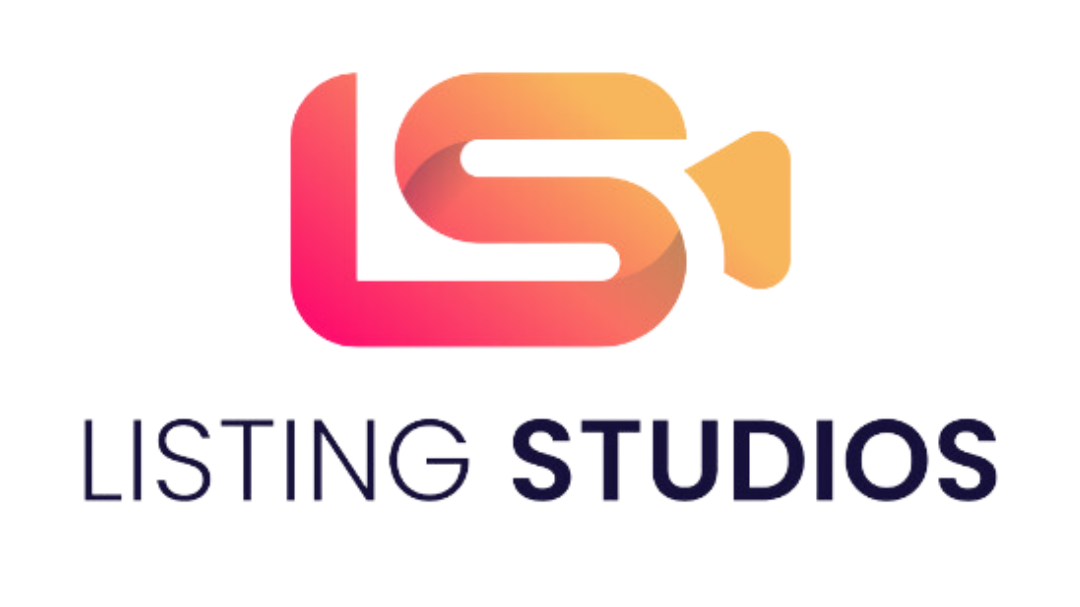
THE ULTIMATE DIGITAL TOOLKIT THAT POWERS MY BUSINESS
(AND MY TRAVELS)
Running a business while traveling the world might sound like a dream - but it takes more than a passport and Wi-Fi. Behind the freedom is a curated stack of tools that helps me stay productive, creative, and connected, whether I’m on a client call, drafting a strategy, or hiking through a new country.
Over the years, I’ve tried dozens of platforms - some stuck, many didn’t.
What’s in this guide reflects the tools I rely on right now: the apps that save me time, reduce mental clutter, and support everything from content creation to team communication to travel logistics.
If you're building a business designed for freedom - financial, time, or location - this toolkit will give you a peek behind the curtain. It's not about using every tool - it’s about finding the right mix that lets you move faster, create better, and live more fully.
Let’s dive in.
Business Tools I Use Every Day
These are the foundational tools that keep my business running smoothly - no matter where I am in the world. From planning campaigns to organizing client files and managing my inbox, these tools help me stay focused, productive, and in control.

GOOGLE DOCS
This is where most of my ideas start.
I use Google Docs for brainstorming campaign angles, writing emails, drafting client reports, and collaborating with my team. It’s simple, cloud-based, and keeps version history (a lifesaver when I make changes at midnight and want to backtrack the next morning).
Example use case: I write briefs for creative shoots here and then share them with designers or photographers, all in one editable place.
GOOGLE SHEETS
This is where strategy meets numbers. I track client deliverables, project timelines, budgets, product research findings, content calendars, and even Instagram growth.
Why I love it: It’s collaborative, flexible, and works seamlessly with other tools in my ecosystem. I’ve even used it to map out my Launch Accelerator Product Packages.
GMAIL
Not just for communication - I use filters and folders to automate sorting by client, project, or tool (like Klaviyo or Shopify). It helps me stay on top of everything without the inbox overwhelm.
GOOGLE DRIVE
The hub that stores it all - contracts, images, Canva assets, client files, and my own travel documents. It’s organized into folders for each project or client.
Pro tip: I give clients shared folder access for creative review and approval, making the process clean and centralized.
GOOGLE CALENDAR
My go-to scheduling tool. I live by time-blocking—batching client calls, creative work, and personal time to stay focused and in flow.
And here’s a bonus: Google Calendar now integrates with Stripe, so instead of relying on third-party tools like Calendly,
I can accept payments directly when someone books a paid session. Simple, streamlined, and one less tool to manage.
Software That Keeps My Business Running
These aren’t just nice-to-haves, they’re the systems that power how I work, sell, and scale.

SHOPIFY
While most people use Shopify to sell physical products, I use it to sell my services.
It’s what hosts our entire website. Our homepage, blog, lead magnet opt-in pages, product listings - it’s all there. Think of it as our digital home base.
KLAVIYO
Klaviyo is what I use to manage all my email flows...welcome sequences, promos, nurture emails, and follow-ups. There are other solid options like Mailchimp, ConvertKit, or Flodesk, so it really comes down to what works best for you.
No matter which one you choose, your email platform is where you’ll automate onboarding, deliver lead magnets, and guide people toward taking the next step.
For example: Every lead magnet I release has a built-in welcome sequence in Klaviyo that warms people up and encourages them to book a call or explore our services.
MANYCHAT
Ideal for setting up automated DMs that don’t feel robotic. I use it mostly on Instagram to drive engagement with giveaways, lead magnets, and waitlists.
Example: “Comment QUIZ to get your e-comm persona!” triggers a ManyChat flow that sends the quiz instantly.
LEADQUIZZES
I use this easy quiz builder to create interactive lead magnets that grab attention and drive conversions. It makes it simple to engage my audience in a fun, personalized way.
The quizzes don’t just collect leads, they also give me useful insights about my audience. I use the results to understand what people want, so I can adjust my messaging, offers, and follow-ups to better connect with potential customers.
TYPEFORM
I mainly use Typeform for customer surveys and onboarding questionnaires. It’s a simple, user-friendly tool that lets you create clean, interactive forms. Instead of overwhelming people with a long list of questions, it shows one question at a time, which makes it easier to complete.
It works well for collecting feedback, learning more about your audience, or gathering details before starting a project. Typeform also connects with tools like Zapier, Klaviyo, and Google Sheets, so you can automate follow-ups and keep everything organized.
My Communication Tools
These are the tools I use to stay connected with my team, clients, and collaborators - whether I’m working from home or on the go. They help me manage conversations, streamline feedback, and keep projects moving forward no matter where I am.

SLACK
I use Slack for internal team conversations, file sharing, and keeping projects moving forward without getting lost in email threads.
Why it matters: It keeps communication fast and focused. I use different channels for creative work, admin, and client updates.
I use WhatsApp for quick, casual conversations with international freelancers, suppliers, and collaborators. It’s fast, familiar, and perfect when email feels too formal or slow.
It’s especially handy when I’m traveling internationally as most people in other parts of the world already use it, so it’s often the easiest way to stay in touch.
Whether I’m checking on a delivery update, sharing a quick voice note, or sending a reference image, WhatsApp keeps communication flowing no matter where I am.
Bonus: This is the one app where you can set your quality images to high so that when you share images and videos, they actually retain their quality!
ZOOM
Zoom is a familiar video conferencing tool I keep in my toolkit for client meetings, screen shares, and even recording podcasts or hosting webinars.
While I don’t use it as much these days - because of tools like Loom and Descript - I still keep it handy for clients who prefer live calls.
It’s reliable, widely used, and often the simplest way to connect face-to-face, especially when building trust or when a quick back-and-forth is more efficient than messaging. Whether I’m walking through a creative concept or collaborating on strategy, Zoom is always a solid fallback.
GOOGLE MEET
Google Meet is a simple, reliable video conferencing tool that’s free with your Google account. It integrates seamlessly with Google Calendar and Gmail, making it easy to schedule or join meetings with one click.
I use it for quick check-ins or client calls when I want a no-download, hassle-free way to connect. Since it’s browser-based, most people can join instantly.
With features like screen sharing, live captions, and breakout rooms, it’s a solid choice - especially if you're already using Google Workspace.
Content Creation Tools I Rely On Daily
These are the tools that power my daily content, from designing graphics and editing videos to refining copy and planning posts. In a world where showing up online matters more than ever, these help me create fast, stay on brand, and keep things looking polished without the overwhelm.

CANVA
My go-to for visual content - and honestly, I’d be lost without it. I use Canva to design Instagram graphics, Amazon infographics, client mood boards, lead magnet covers, mockups, and even presentation decks. It’s where most of my creative assets come to life.
I love it because it’s fast, intuitive, and brand-friendly. I can save templates, stick to my brand colors, and collaborate with my team in real-time. Whether I’m building something from scratch or tweaking a client deliverable on the go, Canva makes it easy to create polished, professional visuals without needing a graphic design degree.
LIGHTROOM MOBILE
I use Lightroom Mobile to edit everything from product photos and lifestyle shots to travel content - right from my phone. It’s the secret to keeping my visuals consistent, clean, and high-end, whether I’m shooting with a camera or my phone.
What I love most is how customizable it is. I can apply presets, fine-tune lighting, enhance colors, and batch-edit multiple photos quickly. It helps me maintain a cohesive aesthetic across client work and my personal brand, without needing to open my laptop or dive into complex software. Perfect for content creators who need pro-level results on the go.
INSHOT FOR MOBILE
Quick mobile video edits on the fly - great for slicing up Reels, adding music, or formatting for social platforms.
CAPCUT FOR MOBILE
For more polished video content with effects, captions, and transitions. I use this when creating launch reels or social content that needs a bit more punch. I use this app when I want to speed up my editing process and just use the templates they have available.
TELEPROMPTER FOR MOBILE
If I’m shooting talking-head videos, I’ll load my script into the Teleprompter app. It helps me sound confident and clear without memorizing everything.
This speeds up my recording time because I'm not fumbling through my thoughts and words.
XCORDERLITE FOR MOBILE
A great tool for capturing my mobile screen - whether I’m showing how to use a tool or recording a process to share with my VA or clients - or sharing this content on social.
FACETUNE FOR MOBILE
This mobile-friendly app is easy to use when I don’t want to log into Photoshop. I keep edits light, but it’s perfect for those final touch-ups on the go.
DESCRIPT
Descript is my go-to tool for recording, editing, and repurposing audio and video content - all in one place.
I now use it to record my podcast video. It auto-transcribes everything, so pulling key points and shaping them into blogs or captions is easy. I used to rely on Zoom just to record, but Descript saves me hours (and dollars) by letting me edit, clean up audio, remove filler words, and create short clips for social or email - all from one file.
Product Research Tools
When it comes to launching or scaling an e-commerce brand, solid product research is everything. These are the tools I rely on - or recommend - to uncover high-demand, low-competition products, validate ideas with data, and make smarter decisions before investing time or money.

HELIUM10
This all-in-one Amazon seller tool is packed with features, but I mainly use it for product research, keyword tracking, and market analysis.
With tools like Black Box (for finding product opportunities) and Cerebro (for reverse ASIN lookup), it helps uncover what customers are searching for - and where competitors are winning. It’s data-rich, trusted by top Amazon sellers, and great for sellers who want both insight and scalability.
ZOOF (AMAZING INTELLIGENCE)
Zoof is a product research tool built for newer or growing sellers who want clear, actionable insights without being overwhelmed. It offers features like demand and competition scoring, profitability estimates, and supplier lookup tools.
I love how user-friendly it is - great if you’re just starting out and need a tool that simplifies the decision-making process without skimping on critical data.
JUNGLE SCOUT
Jungle Scout has been a long-time favorite for Amazon sellers looking to validate product ideas quickly. Its Product Database, Opportunity Finder, and Supplier Database make it easy to filter through millions of listings and zero in on what’s actually working.
It’s ideal for sellers who want a clean, visual way to explore market trends and vet opportunities with confidence.
DATA DIVE
Used by high-level sellers and agencies, DataDive helps take insights from Helium 10 and go deeper.
It creates easy-to-understand dashboards to analyze niches, competitors, and differentiation opportunities.
KEEPA
Keepa is a go-to tool for Amazon sellers who want to make data-driven decisions. Private label, wholesale, and arbitrage sellers use it to track historical pricing, sales rank, and Buy Box trends.
It helps evaluate product viability, avoid short-term price spikes, and spot seasonality. It’s also trusted by researchers, agencies, and educators who need reliable data to support strategy or teach product research.
AI Tools I Use for Creativity and Strategy
These tools help me brainstorm faster, write smarter, and make more strategic decisions—whether I’m drafting content, analyzing data, or refining ideas. They’re like having an extra brain on call when I need to move quickly and stay creative.

CHATGPT
My virtual brainstorm partner and one of the tools I use daily. I rely on ChatGPT to refine my writing, generate fresh copy ideas, draft social captions, outline emails, and even test variations of landing page copy. It's like having a copywriter, strategist, and editor in one.
What makes it powerful now are the newer features - like custom GPTs for specific tasks, memory for ongoing projects, and integrated tools that help with everything from spreadsheet formulas to coding snippets. It’s not about outsourcing - it’s about accelerating. I still inject my voice, my tone, and my strategy, but ChatGPT helps me get there faster and with more clarity.
GEMINI (GOOGLE)
I toggle between ChatGPT and Gemini when I want a second opinion or a slightly different tone or perspective. Gemini is especially useful for pulling insights from dense PDFs, summarizing long documents, or extracting key points quickly.
It's handy when I’m comparing ideas, double-checking content flow, or looking for alternative phrasing. I find it valuable for streamlining research and breaking down technical or wordy materials into something more digestible.
KLING.AI
I use Kling.ai to turn still product photos into short, scroll-stopping videos for my IG Reels.
Sometimes I wish I had taken a quick video during a shoot, and this tool helps fill that gap.
Its still-to-video feature adds motion and dimension, making static images feel more dynamic. It’s just for my own content, but a fun way to experiment with AI.
OPUS CLIPS
Opus Clip turns long-form videos—like interviews or podcasts—into short, engaging clips for Reels, TikTok, and Shorts. It uses AI to find key moments, add captions, and format for social.
I use it to repurpose content and keep my feed active without creating new videos from scratch.
GG
GG is Tony Robbins’s proprietary AI platform that merges his success frameworks with smart automation. It’s like having a digital strategist and mindset coach in your back pocket. I use it when I need help brainstorming content, working through a launch, or shifting my mindset when I hit a wall. It’s ideal for solopreneurs who want a motivational push paired with real strategy.
Why I use it: It’s grounded in Tony’s teachings, which I’ve always resonated with. GG helps me take action faster, stay focused on growth, and cut through indecision with bite-sized coaching prompts and planning support.
What’s Always in My Travel Toolkit
These are the travel tools I rely on to stay organized, save money, and make each trip smoother - whether I’m planning a quick getaway or working remotely abroad. They help me book experiences, split costs, and stay connected while on the move.

CONVERT CALCULATOR
When traveling between countries, quick access to a reliable currency converter is a must. This tool makes it easy to switch between currencies on the go, so you always know what you’re spending - no mental math required.
GET YOUR GUIDE
When I travel, I want to experience a place beyond the usual tourist checklist. I use this all the time to find trustworthy, reliable activities - like cooking classes, hidden hikes, and cultural tours.
It takes the guesswork out of booking, so I never have to wonder if I’m being scammed or overpaying. It helps me explore more meaningfully and confidently wherever I go.
SPLITWISE APP
Essential for splitting costs during group travel, Splitwise keeps everything fair and organized. I’ve used it on girls’ trips and family vacations to track who paid for what—no awkward Venmo convos or guesswork later. It’s a simple way to keep group expenses stress-free.
GOOGLE TRANSLATE
A must-have when traveling to countries where I don’t speak the language. It helps with everything from reading menus and signs to communicating with locals. I also love the camera feature - it instantly translates text from packaging or documents, which comes in handy more often than you’d think.
GOOGLE LENS
This is one of my favorite tools when traveling to countries where I don’t speak the language. It lets me point my camera at signs, menus, packaging, or documents and instantly overlays the translation right on top. It feels seamless and saves so much time.
MOBILE PASSPORT CONTROL
Before I had Global Entry, I used Mobile Passport Control all the time - and honestly, it saved me on so many international arrivals.
It’s a free U.S. Customs and Border Protection app that lets you submit your passport and customs info ahead of time, so you can skip the regular passport control line and use a much faster lane at many major U.S. airports. It’s easy to set up, secure, and super efficient.
THERE YOU HAVE IT!
This blog is your behind-the-scenes look at the digital toolkit I use to run a location-independent business while traveling the world. From essential business tools and creative platforms to AI assistants and travel apps, I’m sharing everything that keeps my work flowing - whether I’m on a client call or exploring a new city.
You’ll find practical insights, real use cases, and tools that help me create content, manage a team, stay organized, and move fast without burning out. If you’re building a remote-friendly, service-based, or e-commerce business, this guide is packed with tools that can save you time, sharpen your strategy, and support your freedom-focused lifestyle.
Want a downloadable version of this blog? Click the button below.
Disclaimer:
The tools listed in this guide reflect my current favorites and go-tos based on what’s working
for me right now. But tech moves fast - features change, pricing shifts, and new tools
emerge all the time. I recommend checking each tool’s website for the most up-to-date info
before making any decisions. This guide is here to share what’s helped me, not to guarantee
results - so always choose what aligns best with your own business needs and workflow.